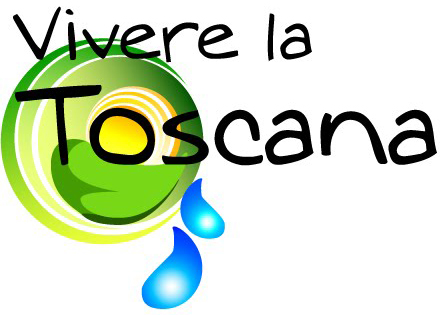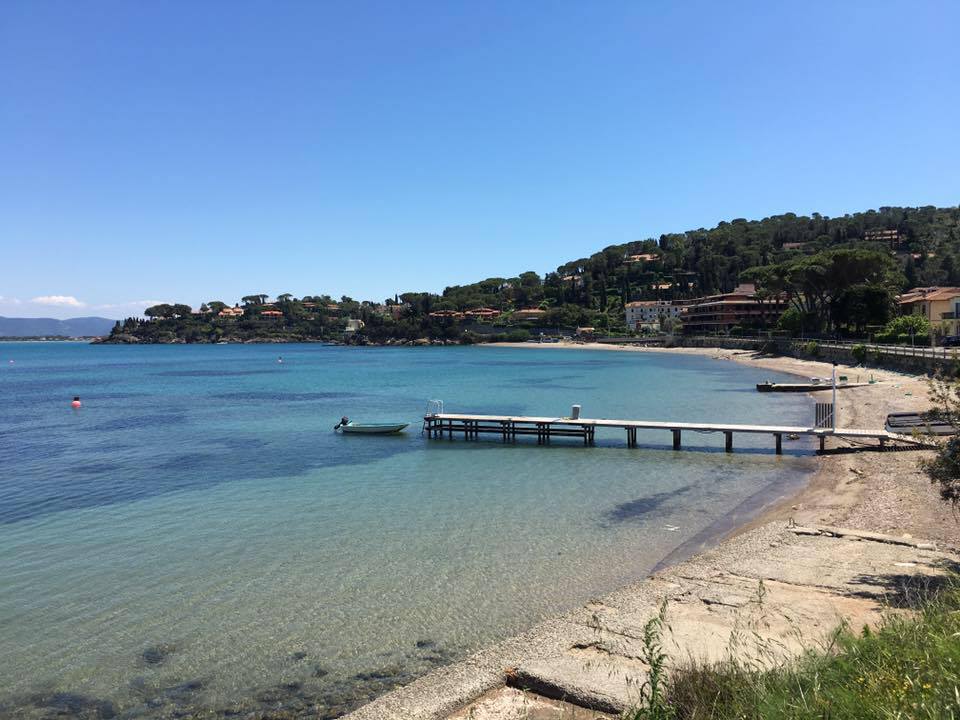On the road from Ortobello to Porto Santo Stefano we find some nice beaches that we want to recommend.
Beach Giannella
The Giannella is the Tombolo (deposition landform) placed north of Argentario, at the km. 9+600 of the road S.S. 440 of Porto Santo Stefano in the Contrada S. Liberata, you will see it on the right a few kilometers before arriving to Porto Santo Stefano. It’s a sandy beach of about 8 km, with seaside resorts, free beaches, bar and restaurants by the sea. The sea degrades gently and this makes this beach very suitable for children. This beach is suitable also for sailing. Finally, we remind you that close to the beach, there is a pine forest that covers in length almost the whole Tombolo.
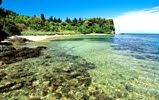
Bagni di Dominiziano
The Bagni di Dominiziano, called also Gerini beach, because of the presence of the Villa of the Marques Gerini, is a free sandy beach (there are no seaside resorts) that is located along the road that goes to Porto Santo Stefano, about 2,5 km before entering the populated area. From the road, however the beach is not visible and also the access path is hard to see because it is semi hidden by the olive trees. This beach is also suitable for children because of its shallow seabed. The coastal area is sandy with low cliffs. The seabed is characterized by the Posidonia oceanica (seagrass). An historical note makes this beach more fascinating, in fact, the rocks that emerge during the low tide in the most western part of the bay are the rests of the bowl used to fish rearing of the now disappeared Roman villa that was called Dominitiana Positio, built in 36 before Christ by the Domizi Enobarbi family, which was a family of the Imperial Rome, from whom the emperor Nero descended and successively it belonged to several Roman emperors until 96 After Christ. In particular, here the future Emperor Nero spent part of his childhood with her mother Agrippine and he was educated by the popular philosopher Seneca. The writer Suetonius in “The twelve Caesars” writes how Nero, when he was young, enjoyed fishing personally the sea bass (Morone labrax) and the flathead grey mullet (mugil cefalus) that were farmed in water fish tanks.
The rocks that emerge during the low tide in the west point of the bay are the rests of the tank used for the fish farming that belonged to the now disappeared Roman mansion. Another particularity of this tank of the Domitiana is that unlikely the other nurseries and fish farms of the emperor Nero this one contained, besides salty sea water also freshwater, that came from the waterhole placed on the top of the straits, through an aqueduct expressly built. The freshwater was necessary to reduce the salt content of fish farm to allow the faster growth of the sea bass and flathead grey mullets, furthermore, feeding based on shrimps, crabs, Mediterranean mussels, figs and Arbutus unedo was a delicacy for the fishes of the Domitiana tank. The historian Del Rosso in 1905 told about the banquet organized by Domitian shortly after his accession to the throne in 81 After Christ: “Who knows about the wonderfully grim dinner with whom Domitian had intimidated Rome, by decorating the room of the banquet like a funeral home, he placed an honorific column next to each klinai, he wrote the name of each guest on the column, he had a sumptuous dinner brought to the senators and the consular by children dressed in black, who flapped like larvae around the guests that were pale and scared, you could strangely see on the tables a wave, that place was a refuge for many kinds of animals that had also a great commercial importance that in this particular environment feed and reproduce”.
with her mother Agrippine and he was educated by the popular philosopher Seneca. The writer Suetonius in “The twelve Caesars” writes how Nero, when he was young, enjoyed fishing personally the sea bass (Morone labrax) and the flathead grey mullet (mugil cefalus) that were farmed in water fish tanks.
The rocks that emerge during the low tide in the west point of the bay are the rests of the tank used for the fish farming that belonged to the now disappeared Roman mansion. Another particularity of this tank of the Domitiana is that unlikely the other nurseries and fish farms of the emperor Nero this one contained, besides salty sea water also freshwater, that came from the waterhole placed on the top of the straits, through an aqueduct expressly built. The freshwater was necessary to reduce the salt content of fish farm to allow the faster growth of the sea bass and flathead grey mullets, furthermore, feeding based on shrimps, crabs, Mediterranean mussels, figs and Arbutus unedo was a delicacy for the fishes of the Domitiana tank. The historian Del Rosso in 1905 told about the banquet organized by Domitian shortly after his accession to the throne in 81 After Christ: “Who knows about the wonderfully grim dinner with whom Domitian had intimidated Rome, by decorating the room of the banquet like a funeral home, he placed an honorific column next to each klinai, he wrote the name of each guest on the column, he had a sumptuous dinner brought to the senators and the consular by children dressed in black, who flapped like larvae around the guests that were pale and scared, you could strangely see on the tables a wave, that place was a refuge for many kinds of animals that had also a great commercial importance that in this particular environm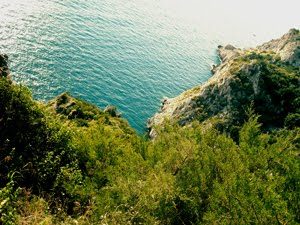 ent feed and reproduce”.
ent feed and reproduce”.
The Soda
We find this beach continuing on to Porto Santo Stefano, is visible from the road and the access is easily identifiable. The soda is a little beach made of gravel, in the contrada Santa Liberata, delimited by two cliffs and its made by light colored gravel. It is divided into two parts by a little pier, on the right side there is the free beach, on the left side there is a seaside resort. It’s a beach made of little cobblestones, we can find also a bar and a restaurant just in front of the sea. Many divers that are just “beginning” go there, because it’s easy to access to the sea with all the equipment and it’s not necessary to use a boat.
There is also a little dock, at the Yacht Club Santo Stefano.
The Pozzarello 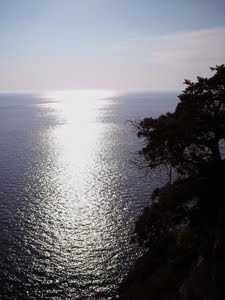
The Pozzarello is located in the bay following the Soda, about 1,5 km before entering in the populated area of Porto Santo Stefano, and its beach, which is made by sand and cobblestones, is placed under the road. The access to the beach is easily visible and it is suitable also for people with disabilities. The seabed is mixed, it is rocked in some places, sandy in others. There is a seaside resort with bar and restaurant but most of the beach is free. This is a very sheltered place and it is suitable for relax and with the Sirocco wind the sea becomes exceptionally transparent and flat as a board.
La Bionda
La Bionda is a lovely and peaceful bay placed next to the Pozzarello. From Porto Santo Stefano you can reach it also by foot (the section is 1 km long and it is flat and suggestive) passing under the tunnels where the little train used to travel from 1913 to 1944; at the end of the three tunnels you will find this lovely beach and its natural barrier made of cliffs, in which the sea is always calm and the coastal area is modest. The beach is free and in part it is organized with the seaside resort which is reserved to the residence. There isn’t any food-court. You can access to it using the slip road that connects Pozzarello with Porto Santo Stefano and you can park the car on the right side, next to the beach.
Punta Nera
From the beach “La bionda” going through the cliff towards Porto Santo Stefano you can access to Punta Nera, it is so little and cozy that it seems to be a private beach but it is not.
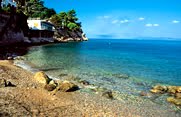 La Cantoniera
La Cantoniera
It’s a beach made of sand and smalls cobblestones that you can reach both from Porto Santo Stefano on foot, passing by the road built on the previous railroad (after the first tunnel), or from Pozzarello (after two tunnels). The access is suitable also for people with disabilities. On the left side you will find the free beach, while on the right side there is the seaside resort with bar and restaurant. The Cantoniera is a radiant beach and it is very busy especially in the afternoon by residents. The cliff on the left is the paradise of children who live in Santo Stefano, and spend time diving from the cliffs. The seabed is mainly sandy with marginal cliffs. On the seabed there are the Posidonia oceanica and mats. During Sirocco days the sea is particularly calm and crystal clear. There are also free beach and seaside resort.
Going towards the sea, opposite the seaside resort you can watch the so called “matt”, which is a smooth carpet which extends for some ten meters, and it is made by old roots of Posidonia oceanica that had made a consistent agglomerate with the sediment. That’s what’s left of a meadow of posidonia of another era. On the left side of the bay there is a little meadow that is doing well instead. This plant is precious for our sea because it creates a huge quantity of oxygen (up to 13 liters a day for each square meter), and with the action of the leaves it reduces the coastal erosion, and also because it creates a valid refuge for a huge quantity of animal species that born and reproduce thanks to the protection of the leaves.
The Marinella of Viareggio
It is reachable only with some difficulties crossing over a little piece of cliff nearby the breakwater of the harbor in Porto Santo Stefano.
It’s a little beach that spreads close to the rocks.
La Sanità (Il Moletto)
The bay of The Moletto is placed in the populated area of Porto Santo Stefano, on the left side of the Marina of Pilarella. The Moletto is the beach that we find walking along Del Molo road (Via del Molo), opposite the Port Authority. The coastal area is mainly pebbly. It’s easy to be reached also on foot and it is suitable also for people with disabilities. The free beach is very little but also the seaside resort is not that big. Besides, there are also a bar and a restaurant just by the sea. In summer in the water of this beach it is set up a water polo pool.
La Caletta
The Caletta is the beach we find walking along Civinini road underneath the namesake hotel. The caletta is inside the town of Porto Santo Stefano too and is easily accessible for everyone. The beach is mainly pebbly and a little artificial dock makes it possible to dive safely. There you can find the bar, the seaside resort, the restaurant with terrace over the sea, and also a diving center with guides for the watching of the seahorses. The seabed is directly deep, it’s perfect for relaxing swimming, however an artificial indentation makes it possible to children to “splash” safely.
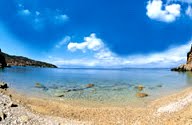 Il Siluripedio
Il Siluripedio
In the populated area of Porto Santo Stefano, the Siluripedio is the beach we find walking along Civinini road up to the main parking.
It’s a little bay mainly pebbly. The sea in front of the beach is characterized by a pebbly seabed, that in the first meters of surface is replaced by bushes of Posidonia oceanica alternating with large areas with thin sediments.
It is named after a military building built in 1941 in order to make practice test of torpedoes for submarines during the World war two and it is born after the dismantling of the installations for the testing of the torpedoes in the western part of Porto Santo Stefano.
In the same creek, walking a hundred meters you can reach the cliffs of Acqua Purgativa, that is a little waterhole of saltwater. Continuing to walk along the cape of the Argentario, following the coast in the western part of the peninsula you can meet others beaches.
